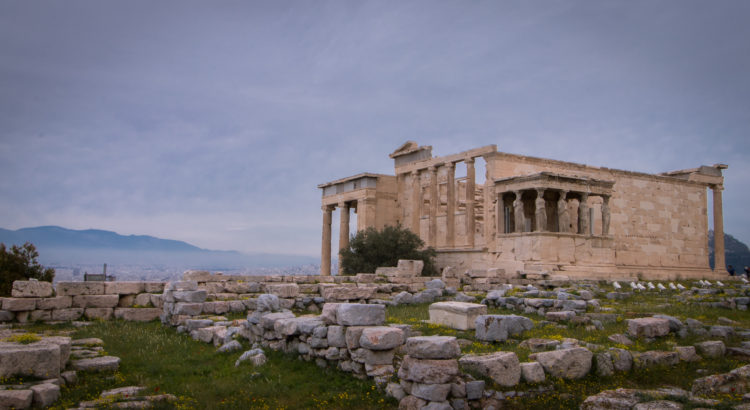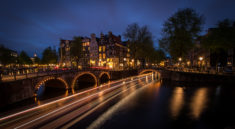My trip to Greece started in my own classic fashion. I arrived at the Copenhagen airport two hours early. I walked up to the SAS self-check in kiosk with my camera bag and a small suitcase. I punched in my confirmation number. The computer coldly states that it cannot locate that confirmation number. I type it in again to make sure I haven’t missed a number or letter. Again, the computer says I am thoroughly not confirmed for this direct flight from Copenhagen to Athens. Just for good measure, I slowly, deliberately and carefully punch in my name and confirmation number. Once again, I am not confirmed.
I walk over to the SAS help desk and give the attendant my name and confirmation number. The man types it in. He waits. He types again. He waits. He says he cannot find my reservation, but could he see my ticket? I show him the email with my ticket confirmation and he looks at it for a few seconds before saying “Sir, today is March 24th.” I look at him blankly and say “Yeah flying out March 24th and returning March 30th.” He looks at me puzzled and I’m sure I’m also looking at him fairly puzzled. “Sir, your ticket is for February 24th.” I look down at my phone and sure enough the dates are 2/24/2018 and the return flight is 3/30/2018. I immediately realize I’ve made a huge mistake.
After having to purchase an extraordinarily expensive one-way last-minute ticket to Athens, I got to the gate with about 30 minutes to spare and waited on standby hoping that somehow they would have one extra seat on the plane. After everyone was on board, the attendant comes over to me and says they can fit me on the flight. Easter break has been salvaged.
The original plan was to spend a week in Italy but ultimately, I decided that Easter plus the Vatican may be a crowded combination (not that there is a point where Rome isn’t crowded). Greece seemed to offer a similar combination of warm weather, sunshine and ancient history. With the week I got to explore the unique geography and architecture of Santorini, the awe-inspiring cliff-nestled monasteries of Meteora, and revisit my 7th grade ancient history class while touring Athens. With such a diverse offering, I think Greece truly has something for everyone.
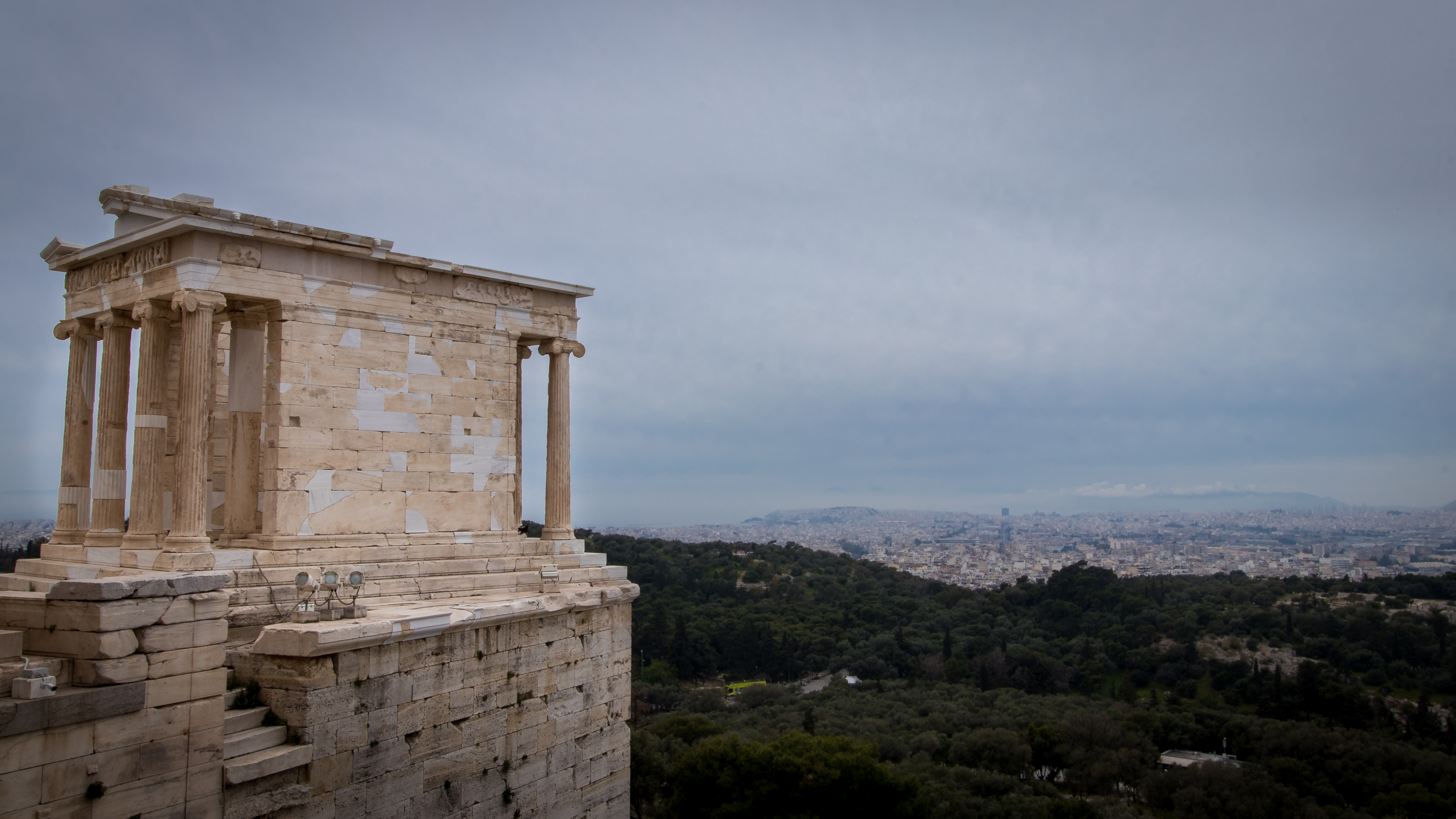
Santorini
Santorini probably needs no introduction. It is well known for its idyllic white washed buildings, vibrant colors and blue domes. I didn’t know much about Santorini before going there outside of what came up on google images. Counter to what I had imagined, the weather prevented a lot of the photography I hoped to do but I was pleasantly surprised by how much the island had to offer outside of the incredible views and unique architecture that makes it so renown.
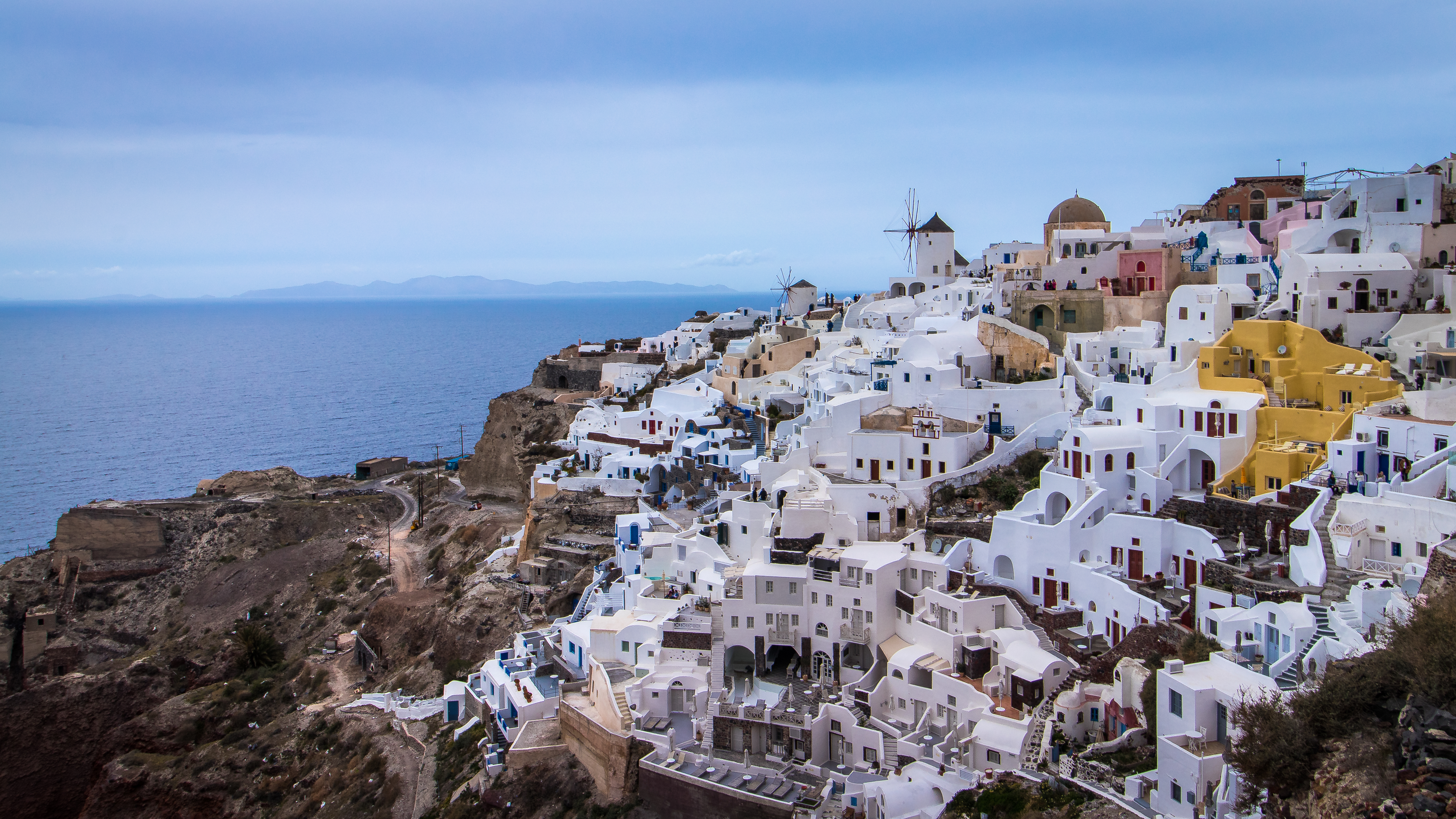
The town of Oia is perhaps most synonymous with the views you expect in Santorini and is known for its iconic sunsets. Most of the accommodations you will find are located in the town of Fira which is central to the island and about a 25-minute drive from Oia. One should know that Fira and Oia are perhaps the most touristy locations on the island. In spring, the crowds are smaller as it is the low season, however at sunset there were still swaths of people trying to find the best locations to view the sunset. While spring is a lovely time in Greece, the islands are a bit more difficult to do this time of year. Santorini is perhaps one of the better Greek islands to visit as Santorini is not necessarily well known for its beaches. The temperatures while I was there were in between 60 and 66 degrees Fahrenheit, which is not really warm enough for beach lounging. Santorini still has plenty to offer though during this time of year in terms of some awe-inspiring visuals.

One should know that traveling to the islands in Greece during spring is difficult by any other mode other than by air. During the spring many of the ferry lines shut down or operate on very infrequent schedules making it difficult to island hop. Additionally, the down period means that many restaurants are closed and many buildings are under renovation. That isn’t to turn you away but to simply say you may not get the complete experience of Santorini. The benefit is there are a lot less people so if you would like to avoid the normal crowds this is a good destination for you in spring.
Outside of the main touristy areas of Fira and Oia, there is plenty to keep you busy if you decide to rent a car or ride the bus system. The bus system from Fira to Oia is quite good so if those are the places you want to see you won’t need transportation. However, getting to other locations such as the Red Beach, the Black Beach, the Lighthouse, and the ancient town of Akrotiri will be difficult with the bus system as the bus leaves from Fira goes to these locations and then back to Fira. While the island is small, you end up using a lot of time going from Fira to a location and all the way back. However, with a one-day car rental you can get out on the roads to the less crowded areas and see all of those attractions in about six or seven hours (including time for getting lost). I would say that these are all unique locations and well worth the visit. Driving on the island is straightforward because well…it’s an island. You can’t really get that lost. Backtracking because you missed a turnoff may happen, but the main attractions are fairly well marked (except I never figured out how to get to the White Beach but I saw several other oddly colored beaches so I was okay skipping it).

As a volcanic island Santorini has many unique geological phenomena such as the red sand beach. The rocks and sand contrast beautifully with the turquoise water as they truly are a deep shade of red. The black beach is also unique however it is generally closed during the spring and may be a bit unkempt. The lighthouse at the absolute west end of the island is perhaps the farthest point but a great photography location. If you are not so much into photography I would say there maybe isn’t as much to do here. The views are great, but you cannot enter the lighthouse or approach it in any way. You would only want to go for the visuals. Finally, the ancient city of Akrotiri is a fascinating excavation site that is still an active archeological dig. The city is from a pre-historic Minoan civilization dating back to before 1627 BC when the town was covered by volcanic ash. The fact that it is still being excavated makes it particularly interesting because not only do you get to learn about the people who lived there and their lifestyles, but you can see how they are going about trying to uncover the city. I understand that maybe that isn’t everyone’s cup of tea but it is on the way to the red beach and so it is worth at least a short stop.
Unfortunately, I don’t feel like I got the complete experience of Santorini as there was a massive dust storm from Africa rolling through which meant that visibility was low and we never truly got to see a warm, clear sunset which is what Oia is known for. But even so the island is incredibly stunning and well worth a visit. I was there for three days and I think that was enough to explore the island. The first day can be spent in Fira if that is where you are staying and then you can get to Oia in the evening in about 25 minutes by bus. If you rent a car for one day you can explore the rest of the island. The last day can be spent revisiting Oia or simply relaxing before heading out.

Meteora
After a brief stop in Athens, I decided to continue on my travels to a town in the northern part of Greece called Kalabaka. Kalabaka is home to a location that perhaps doesn’t get as much attention as Athens and the Greek Islands, but I have to say it was the highlight of my trip. Meteora is a rock formation that is home to six working monasteries that are built on top or even into the stone precipices of the area. Originally hermitages, these monasteries formed over the course of time as defensive bastions for Christian monks attempting to escape persecution. At the height, this area was home to more than twenty monasteries. While there are six functioning monasteries remaining there are several more that are abandoned and not open to tourism. However, the views of the monasteries themselves warrant a visit and the monasteries that are open for visitation offer a glimpse of monastic life and displays of a rather unique Byzantine art style.

The active monasteries of Great Meteora, Varlaam, St. Stephens, Roussanou, the Holy Trinity, and St. Nikolas all offer their own unique charms, art and architecture. Great Meteora offers the most in terms of history and it is also the largest of all the monasteries. Here you can access several rooms that teach you about how the monks lived and worked. There are also several ancient artifacts and documents housed here which may be of religious interest. I also visited the monastery of the Holy Trinity which offered some stunning views, however there is much less that can be accessed by tourists at this monastery. As for the other monasteries, I cannot comment on how much time to spend there or which ones to see as I did not have time to view more of them. If I had more time, I would have liked to spend time in Varlaam as it is nearly the size of Great Meteora. I also heard that the paintings in the monastery of St. Nicholas are rather unique.

There are a few ways to get to Meteora. I ultimately booked my travels through a tour company which included a sunset and hiking excursion. You can book your own trip by buying a train ticket to Kalabaka and then finding your own hotel and tour guides. Conversely you could also get a car which would be faster as the train takes around five and a half hours in total travel time where a car would take around four. The other advantage is you could make stops at some other locations along the way like Delphi or Thermopylae. You have a lot more freedom and can save some time with that option.
But however you may decide to get there, Meteora offers incredible visuals, hiking and history. I ultimately spent only two days here and I was only able to go inside two of the monasteries. I wish I had included another day so I could explore the area more and see more of the interiors of the monasteries. Another important detail is the monasteries each have one day they are closed. So to have the chance to visit them all you must stay at least a minimum of two days. But there is enough hiking to do and plenty to see, so I think a three day trip may have been more warranted if I had the time.

Delphi
After a long train ride home, I got into my Airbnb rather late and woke up the next morning fairly sick.

However I had a tour booked to see Delphi so I was up early and on the bus. Delphi is a rather famous and important site for the Greeks as it was believed to be the center of the world (based on the known world at the time, the Greeks were not that far off to their credit). It was also home to the Oracle of Delphi which was an important figure in the Greek world (and responsible for a great number of Greek tragedies). The site is nestled on the slopes of Mount Parnassus providing an incredible backdrop for the ruins. There is a lot of history to be had at the site and a museum nearby houses most of the discoveries that have been unearthed there. As the Oracle was influential even through Roman times, you can see almost every stage of Greek sculpture and history there in the museums. It is quite fascinating to see over the centuries how Greek art evolved and what it reflects in the state of the society. The most famous feature there is the Charioteer of Delphi which is a particularly rare work in bronze. Bronze sculptures are not a very frequent find from antiquity as they either corrode or were melted down for the raw materials.
Looking back on the trip, I think that I would have rather done the excursion on my own instead of with a tour company. All the tour companies arrive there at around the same time which means you are there with a thousand other people at around noon. Delphi is about a three hour drive from Athens, but the drive back ended up being around six hours due to the traffic conditions. With your own car and some more flexibility I think the crowds and traffic could have been avoided and you could spend more time at the site as the tour groups seem to really speed through things. They only cover the most important exhibits at the museum and only provide about 45 minutes to explore the ruins themselves. I don’t think that was enough to truly appreciate the site.
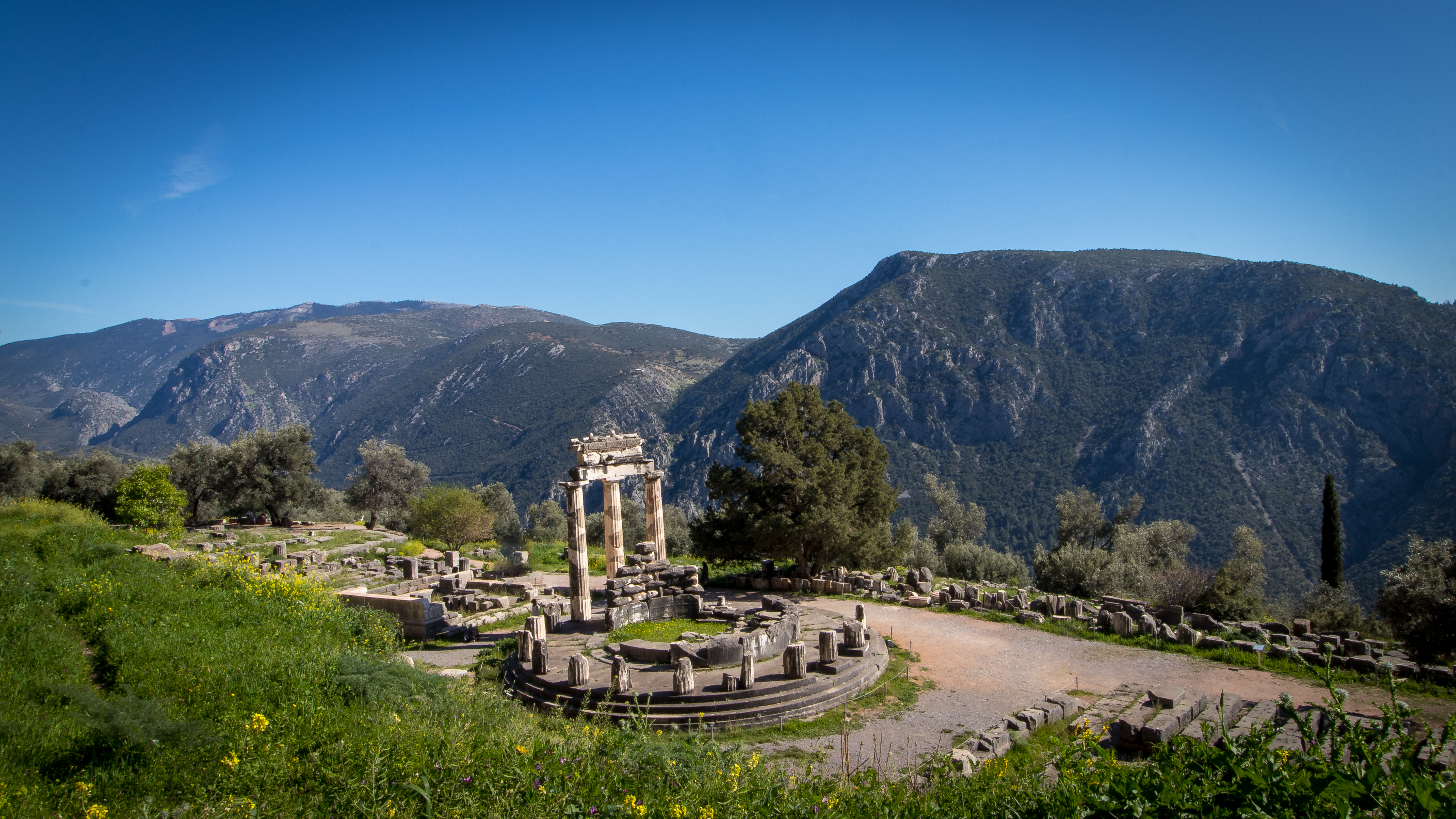
Athens
Back in Athens I was more sick than I care to admit and I also admit it was maybe not the best strategy to leave Athens for the last day. There is easily three days worth of things to do there and with around 14 hours I tried to see most of the ruins and a few of the museums. I stayed at an Airbnb near Syntagma Square and if you are in this area most of the important landmarks and ruins are in walking distance. I kicked off the morning by hiking to the peak of Mount Lycebettus which offers a panoramic view of the city and a view looking down on the Parthenon. I would recommend visiting this sight around dusk and seeing the Parthenon lit up at night. That was the original plan but with how late I got in from Delphi combined with my health I couldn’t make that happen. The hike itself takes around 45 minutes from Syntagma Square so it is not as far away as it might seem. After hiking back down I headed for Monastiraki Square which has plenty of great locations to eat (more on Greek food later) and is close to several ruins and the acropolis. Hadrian’s library which is a Roman era ruin is right next door however I wouldn’t classify it as a must see. After Hadrian’s Library I went to the Roman Agora which is also nearby and on the way to the Acropolis.

Hiking up to the Acropolis I was pretty worn out and it was only around 1pm. When I arrived the line was pretty substantial and took about 30 minutes to wait through. Looking back on it I would say the acropolis is better done in the morning or late afternoon. 11 am to 2 pm seemed to be the peak hours for people. When I walked back past the entrance later in the afternoon there was no wait at all. With that said you obviously must see the Acropolis if you decide to see anything at all. No picture can capture just how large and imposing the Parthenon is. The Erechtheion and the Temple of Nike are also iconic locations all on the Acropolis. There are also numerous signs and information displays that provide context and history behind what you are seeing. If you would like more, the Acropolis museum is a short walk away and is a great follow up as it contains most of the artifacts that have been unearthed there and it tells the full story of the development of the Acropolis through the ages. It also has displays showing what the temples would have looked like in antiquity which helps provide a better understanding of the sheer grandeur and engineering marvel that is the Parthenon.
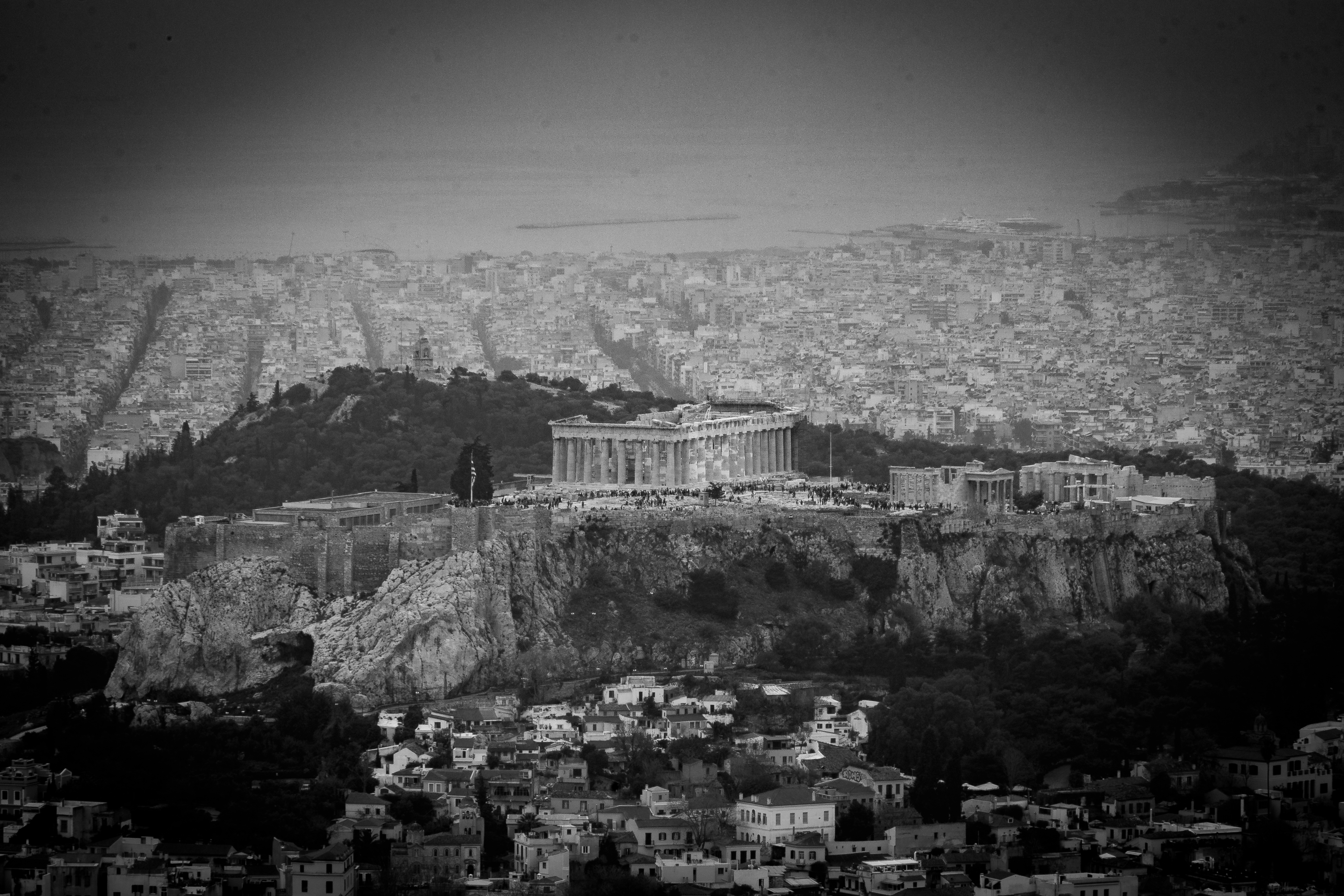
I severely underestimated how much there is to see and do in Athens. Personally, I was interested in the history of the place and focused mostly on that during my stay. But there is a considerable night life scene in the city and the food deserves its own post. The food I had at nearly every place I went during my trip was incredible. I also lost track of just how many gyros and kebabs I ended up consuming over the course of that week. But Greece is worth a trip not just for the history and the sights but also the food experience. The first day I arrived, I was wondering around the streets of Athens trying to find the location where I was supposed to stay the first night. The host wasn’t able to make it when I first arrived, but an older Greek gentleman who spoke only a bit of English took pity on me. He pulled me into his restaurant, sat me down and offered me his phone so I could get in touch with the person who would let me in to the apartment. I had a couple hours to spare and I was absolutely famished so without looking at the menu I asked if he would just bring me what he would order. He then brought me a Greek salad, a basket of bread, along with a plate of rice and beef. That was the first meal I had in Greece and I have to say they have this food thing figured out. I could give a list of some of the restaurants I visited but to be honest, I would say to just keep an open mind, walk around and stop in at whatever looks good at the time. Also, there will be lots of hosts outside of the restaurants trying to chase you down so really I don’t think anyone will have trouble finding a place to enjoy a meal with the afternoon sun.
While I saw what I could in six days, I certainly have a list of places I wish I had gone. There are several islands I still wish to visit including the Ionian Islands, Crete, Rhodes, and Delos. I would like to go to Thessaloniki which is the second largest city in Greece and if I make it back I would certainly spend a lot more time in Athens and even visit the Acropolis again. If you end up deciding to make a trip to Greece and you have more time than I did, I think you will find Greece to be worth every minute.


